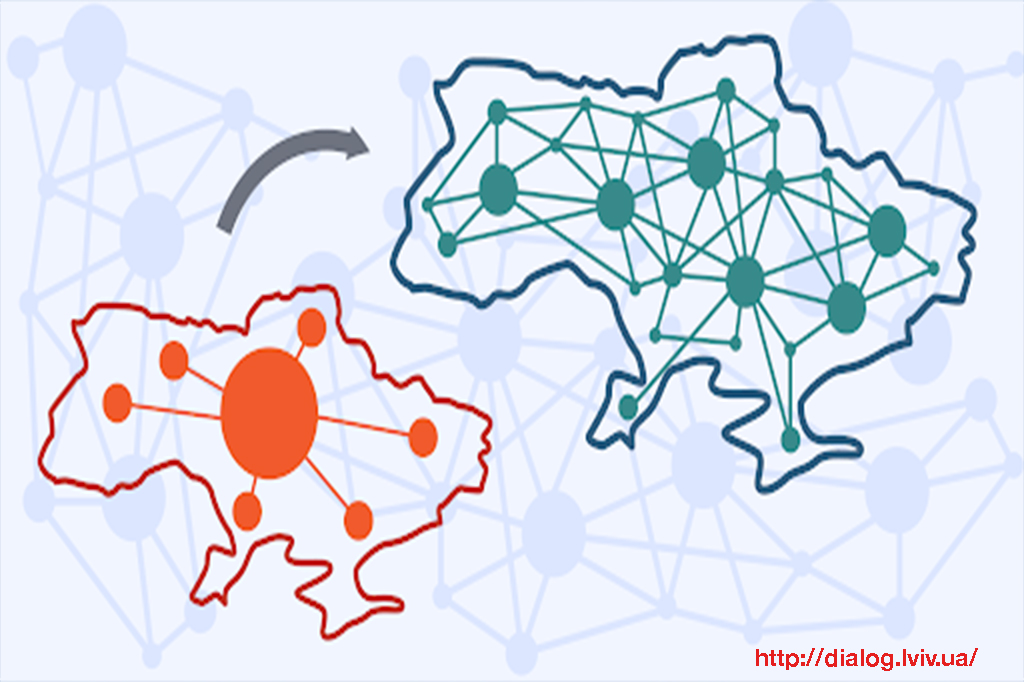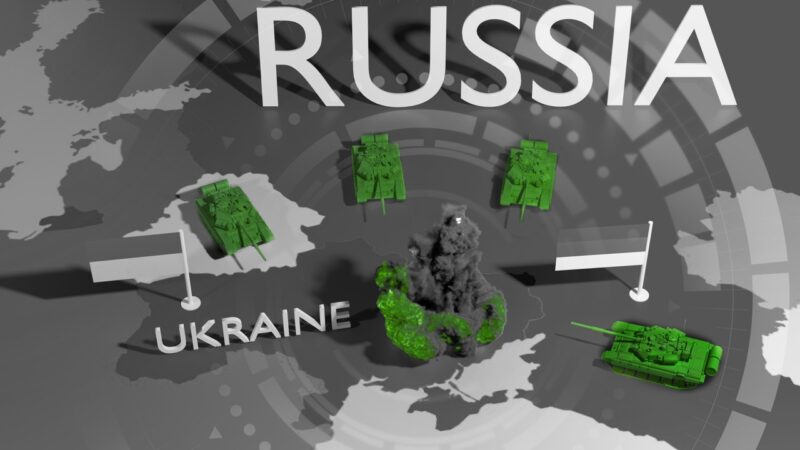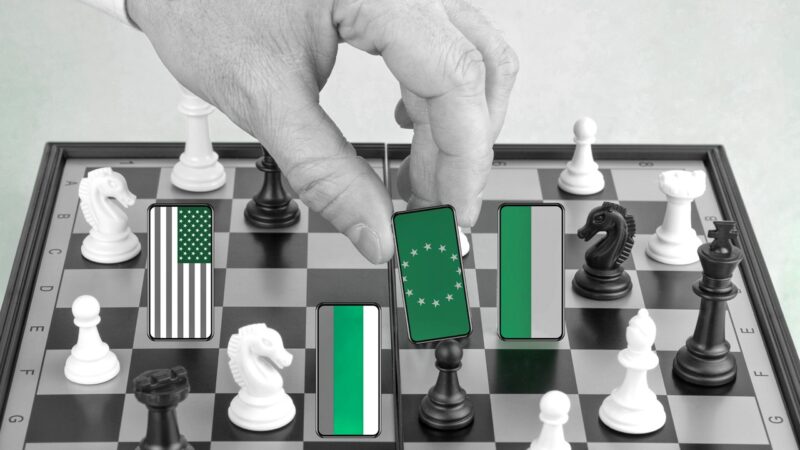Ukraine’s Decentralization from the Perspective of Territorial Self-Governance and Conflict Management

This essay is based to a considerable extent on the forthcoming volume Decentralization, Regional Diversity, and Conflict: The Case of Ukraine, co-edited by the author and Dr. Anna Shelest (Palgrave McMIllan, 2020). All contributions are properly referenced throughout.
Background
Decentralization has been widely regarded as the top success among the reforms launched in early 2014 in the wake of Ukraine’s Revolution of Dignity. So far, the key achievement of decentralization has been the empowerment of territorial communities (hromady) through their voluntary amalgamation and through broadening the scope of their competencies. Logically, this empowerment has included granting the communities new sources of income, mainly provided through the redistribution of tax income between the State Budget and local budgets and by launching new subventions for the improvement of infrastructure and public services. There are currently 1,470 amalgamated territorial communities (ATCs) in Ukraine, and this aspect of decentralization is proceeding with a considerable “decrease in the number of raiony (districts) through amalgamation and establishment of entirely new sub-regional units.”[1] While recognizing the deep transformations being generated by virtue of the decentralization reforms, the implementation still faces a range of challenges. They include, inter alia, (i) the failure so far to introduce relevant amendments to the Constitution, thus potentially watering down the intended results of the reforms;[2] (ii) uncertainty as replacing local administrations with the institute of prefects;[3] and (iii) shaping the interplay between the decentralization reform and the state reintegration policy.
Ukrainian and international scholars have predominantly zoomed in on the economic, political, and legal aspects of the reform.[4] A considerably lesser number of studies explored sensitive topics such as regional and ethnocultural diversity and identity politics.[5] Moreover, although territorial self-governance arrangements (TSGs), including different forms of decentralization, are broadly applied as a tool to manage conflicts,[6] the role of the decentralization reform in managing the war in Eastern Ukraine had not yet been explored in scholarship. In this vein, we will address the benefits and threats the decentralization reform has so far produced in the context of the war given existing knowledge about the TSGs as a conflict management tool.
TSG Arrangements as a Conflict Management Tool
A decrease in interstate wars is one of the trends that shaped the post–World War II global security environment. There has, however, been a notable rise in ethnic, linguistic, and identity conflicts within states, as well as external (foreign) support to the parties of such conflicts or even artificial fuelling of such conflicts from the outside. Unresolved inter-societal cleavages and the lack of social cohesion make countries particularly vulnerable to the emergence of complex conflict constellations, embracing both the intra- and interstate aspects.
TSG arrangements, whether permanent or transitional, are a frequent tool to manage territorial conflicts within states [emphasis added]. The reason for this is that “they offer a compromise between the highly centralized, unitary state at the one end of the spectrum and the redrawing of international boundaries at the other.”[7] In substantive terms, the TSG arrangements encompass a power-sharing component, i.e., provide for the distribution of authorities between the center and the TSG entities and the latter representation at the central level.[8] They may also embrace norms concerning policy coordination and dispute resolution. If agreed on in terms of conflict settlement, the TSG arrangements are upheld through domestic and internal guarantees, ensuring their sustainability. Institutionally, respective arrangements take one of four forms: federation, autonomy (federacy), devolution, and decentralization. Federation is marked by the combination of federal entities’ extensive self-rule with institutionalized shared rule (e.g., Belgium, Bosnia and Herzegovina). In turn, autonomy and devolution signify extensive self-rule for specific entities, provided for in the Constitution (e.g., Catalonia, Basque Country, and Galicia in Spain) or in ordinary laws, respectively (the UK). Decentralization can be explained as a transfer of executive and administrative powers to regional and municipal bodies without granting them legislative powers but with the right to adopt by-laws (Kosovo, Macedonia).
Although power-sharing arrangements have been institutionalized via different forms of TSG in numerous contexts, the studies of TSG as a conflict management tool are marked by two intertwined challenges. Firstly, the TSG cannot be regarded as a panacea for a conflict, since its effectiveness depends on numerous contextual factors, such as the patterns of groups’ settlement within a country, the extent of ethnic heterogeneity in the entities to receive extended powers, societal polarization, and last but not least, the degree and intensity of foreign involvement. Secondly, the foreign involvement in particular—or, to put it differently, the interstate dimension of contemporary conflicts—has not been addressed in the literature on TSG arrangements as a conflict management/settlement tool. In this vein, the ongoing decentralization reform in Ukraine can be regarded as a noteworthy example of the TSG arrangement, being introduced amid the complex conflict constellations, with intense foreign involvement. In theoretical terms, the particular relevance of the Ukrainian case is determined by at least three factors: (i) the peculiarities of Ukraine’s history, shaped by multiple divisions and ethnocultural influence; (ii) the ethnic, cultural, religious, and identity-related diversity within contemporary Ukraine; and (iii) the complexity of the ongoing war, marked by a strong geopolitical dimension and manifesting “a conflict over Europe’s political, economic and security order.”[9] Before proceeding with the analysis, we would like to note that the 2014 Conceptual Framework for Reforming Local Self-Government and Territorial Organization of Government in Ukraine did not mention the annexation of Crimea or the unfolding conflict in Eastern Ukraine as among the challenges the reform seeks to address. Although conducting the decentralization reform was stipulated as one of Ukraine’s obligations under the 2015 Minsk II Accords, the Concept document was not amended correspondingly. Consequently, the decentralization reform has formally remained disengaged from the ongoing international peace process. Nowadays, however, policy analyses and media are actively discussing the potentiality of conducting elections in the uncontrolled territories alongside the planned local elections in October 2020.[10] Representing the first pronounced nexus between the decentralization reform and Ukraine’s efforts to reintegrate the uncontrolled territories in Eastern Ukraine, the autumn 2020 elections give an extra impetus to reconsidering the ongoing decentralization reform as a means of settling the conflict.
Decentralization Reform and the War in Eastern Ukraine
We argue that the decentralization reform, as implemented in Ukraine, cannot be regarded as a TSG, immediately leading to the settlement of the ongoing conflict, which to a great extent is fuelled from outside. From the perspective of conflict management, the initial design and implementation of the decentralization reform has produced both benefits and threats, addressed below in more detail.
Benefits
The key benefit that the decentralization reform has delivered for settling the conflict and reintegrating Ukraine’s uncontrolled territories entails the profound strengthening of Ukrainian communities’ resilience and a new impetus to local development. If properly communicated, this, in turn, raises the attractiveness of reintegration in the eyes of the population in uncontrolled territories. The concept of resilience, increasingly popular in the European context, signifies “the ability to fight shocks and persistent structural challenges in such a way that societal well-being is preserved.” By virtue of broadened authorities and new financial resources, the local self-government authorities acquired stronger control over “making” local policies and local development. The empowerment of ATCs has been also ensured via introducing “capacity” and the development of “prospective plans” as decisive criteria in the amalgamation process and granting ATCs access to the new forms of inter-budgetary support, such as the infrastructure, health, and education subventions. In combination, respective changes have turned communities’ lives from “making ends meet” to a development focus, foundational for building resilience and offering individuals greater opportunities. Besides the local self-government reform per se, the decentralization of educational and health services, and the improvement of the quality of public services have become the key avenues for broadening the opportunities, available to individuals. Resilience, development, and broader socio-economic opportunities are foundational for ensuring the security of reintegration, solving persistent humanitarian issues, and building trust between the inhabitants of the ATCs and the currently uncontrolled territories.
Next, there has been evidence showing that decentralization reform has been conducive to building social cohesion. According to Dragolov, et al. (2016), social cohesion can be defined as “the quality of societal cooperation and togetherness of a collective, defined in geopolitical terms, that is expressed in the attitudes and behaviours of its members.”[11] Cohesive societies or smaller societal groups are marked by resilient social relations, connectedness between its members and the community, as well as “a pronounced focus on the common good.” Ethnocultural, religious, linguistic, or identity-related diversity and immigration cannot be regarded as factors that are “fundamentally detrimental to social cohesion.”[12] Furthermore, according to the so-called “contact” theory, immediate contact between different groups has been demonstrated to reduce stereotypes and improve the relations between them.[13] The proponents of the “conflict” theory would, however, argue that the interactions within the ethnically/linguistically/religiously diverse environments are a source of mutual anxiety and conflicts.[14] As determined Aasland et al. in their empirical study, conducted in the border regions of Kharkiv and Chernivtsi, the formation of ATCs has been conducive to social cohesion amid the multi-aspect diversity, predominantly due to economic reasons.[15] For the vast majority of interviewees, economic considerations (i.e., an opportunity to improve living standards) have been the key motivation for amalgamation, and any possible effects on social cohesion would be regarded as secondary. Nonetheless, particularly the pursuit of novel economic opportunities, such as state subventions for infrastructural projects, has been reported as conducive to promoting togetherness and a focus on the common good. Alongside novel economic opportunities per se, decentralization promotes social cohesion through the broadening of competencies at the community level, resulting in strengthened democratic accountability, as well as novel mechanisms of institutionalizing cooperation between the ATCs. Umland also finds that decentralization “deprives Russia’s various hybrid warriors of customary international frames and critical entry points for seditious action” and “complicates the targeting and planning of irredenist operations similar to those in Simferopol, Donetsk and Luhansk in 2014.”[16]Below we show that although the loss of political relevance by regional capitals and governments is beyond doubt conducive to cohesion (and decentralization bears significantly lesser secessionist risks compared to federalization), the ATCs remain vulnerable to separatist moods. Along with the regional capitals in 2014, they can be used as “entry points” for promoting secessionism. Therefore, building cohesion through decentralization and new incentives for cooperation and regional development shall not be viewed as unconditionally achieved and necessarily sustainable. Similar to building resilience and trust, cohesion building is an ongoing process that requires further investments and quality state communication. Amid the lack of topical information regarding developments in the uncontrolled territories in Ukrainian sources and vice versa, quality communication constitutes the cornerstone of building cohesion between Ukrainians in controlled and uncontrolled territories.
Furthermore, decentralization reform can be seen as creating the foundation for a qualitatively different life in the uncontrolled territories after reintegration. Before the occupation and the creation of the so-called “People’s Republics,” Eastern Ukraine suffered from numerous local self-government challenges, such as substandard quality of public services, deviation between the local socioeconomic development policy and community interests, and a lack of local democracy mechanisms. The occupation and protracted war have resulted in a massive breakdown in the Donbas; according to President Zelensky, Ukraine would require at least two annual state budgets to reconstruct its infrastructure. In the case when the occupied territories are reintegrated and following the resolution of persistent humanitarian and infrastructural challenges, the decentralization mechanisms can be used to stimulate bottom-up local development in Eastern Ukraine. Moreover, broadening the ATCs’ authorities and financial resources is likely to exert a positive impact on relations between local leaders in the Donbas and the central authorities in Kyiv. Notably, already 20 of the 46 planned ATCs were created in Donetsk oblast, and following the reintegration, this process can spill over to the currently uncontrolled territories.
Alongside building resilience, cohesion, and creating the foundation for a qualitatively different life in Eastern Ukraine following reintegration, decentralization reform bears a number of threats in the context of the war.
First of all, the key conceptual challenge deals with a missing link between decentralization reform as provided for in ordinary laws conducted in controlled territories, on the one hand, and the Minsk process and Ukraine’s efforts to reintegrate the Donbas, on the other.Although the decentralization reform is formally approaching its finish with a much clearer territorial organization of Ukraine and stronger communities, the constitutional amendments, part of the Minsk II Accords and provided for in the Special Order Law, are pending.[17] Moreover, neither the decentralization nor the “special status” of the Donbas is referred to in the 2018 Reintegration Law, meant to formalize Ukraine’s reintegration efforts.[18] The missing link between the decentralization reform and Minsk II is to a great extent rooted in the failure to implement crucial arrangements under the Minsk II Accords, including a ceasefire, the withdrawal of foreign troops and military equipment, and the disbanding of illegal armed troops. Key discrepancies between the Ukrainian and Russian positions as to the implementation of the Minsk II Agreement concern the sequencing of implementation of the commitments. Ukraine insists on prioritizing security commitments and restoring its control over the border prior to local elections in the uncontrolled territories. Still not recognizing itself to be a party to the conflict, the Russian Federation supports the reverse sequencing, whereby Ukraine will only get control over the border after the elections. In turn, the lack of provisions on decentralization in the Reintegration Law is determined by the parallel existence of two contradictory domestic regimes concerning the war and the uncontrolled territories provided for by the Special Status and the Reintegration Law, respectively.[19]Amid the deadlock of the negotiations regarding the order of the commitments, President Zelensky registered the draft law No. 2598 dated 13 December 2019 concerning amendments to the Constitution concerning decentralization. Despite its approval by the Legal Policy Committee, the draft law was withdrawn on 17 January 2020, and no alternative draft laws were suggested. Hence, under no progress concerning the Minsk II, the decentralization reform will likely remain stand-alone amid the legal political and legal uncertainty surrounding the conflict settlement.
Secondly, as illustrated by Bader, despite its evident accomplishments and tangible deliverables for hromadas, decentralization has also been accompanied by local elite capture.[20] Using the examples of ATCs from different regions, he shows that the ATCs’ formation has to a great extent been driven by local elites. In many cases, the ATCs’ formation has been driven by municipal leaders who either acted autonomously or were supported by powerful actors, such as businesspeople and politicians at the higher level of government. That is why the ATCs’ formation hardly led to any change of leadership in the ATCs. The entrenchment of the ATCs’ leadership, already in power, and the solidification of their patronage networks, largely shaped by the land-related interests, have decreased the reform’s legitimacy and the overall quality of governance in Ukraine. Given the prevalence of the separatist threat and strong links with Russia in the currently uncontrolled territories (that would not just disappear in a day when the uncontrolled territories are reintegrated), the threat of local elite capture is particularly high for the Donbas.
Last but not least, a crucial threat brought about by decentralization deals with attempts to launch a parallel system of power through establishing the so-called “fake” hromady, allegedly sponsored by the Russian secret service. According to the Security Service of Ukraine, “fake” hromady may take several forms, such as territorial hromady under public law, unregistered pseudo-communities, and the so-called Cossack militia units. Such “fake:” hromadas have not only made political statements but were found to manipulate communal property and try collecting taxes. According to Barbieri (2020), “fake” hromadas, regardless of their form and specific activities they engage in, may be used by the Russian Federation as entry points for promoting destabilization.[21] Amid the political and societal pressure for reintegration and the lack of a decentralization–“special status” nexus, the presence of parallel power structures in the Donbas and beyond is as dangerous as local elite capture.
Conclusion
In contrast to multiple conflict contexts, the ongoing decentralization reform in Ukraine was not meant as a conflict management or settlement tool per se—though the constitutional reform concerning decentralization is provided for by the Minsk II Accords. So far, it has also been paving the way for reintegration rather than actually influencing it. Such a situation is to a great extent determined by the hybrid nature of Russia’s aggression in Eastern Ukraine, whereby it does not recognize itself as a party to the conflict, and its pursuit of the destabilization policy vis-à-vis Ukraine. Amid the lack of progress as to amending the Constitution with respect to decentralization, the decentralization reform has been conducive to communities’ resilience and cohesion, as well as promoting local development and creating new opportunities for individuals. Subject to proper communication, these benefits can turn reintegration into an attractive option for the inhabitants of the uncontrolled territories. Despite the tangible benefits the reform has brought to hromadas, their amalgamation bears the threats of local elite capture and the creation of the so-called “fake” communities. Such threats can be particularly dangerous in the reintegration context. Nonetheless, due to the legal uncertainty concerning the interplay between decentralization, the implementation of Minsk II Agreement, and Ukrainian legislation on “special status” and “reintegration,” decentralization risks remain a stand-alone reform field, not leading to conflict settlement. In broader theoretical terms, the case of Ukraine shows that the TSG solutions are difficult to apply amid extensive foreign involvement, hybrid aggression, and conflicts with a pronounced geopolitical aspect. In such cases, decentralization may serve to empower the state from the bottom rather than settle conflict.
[1] Romanova, V., and A. Umland (2019). Ukraine’s decentralization reform since 2014: Initial achievements and future challenges. Chatham House “Ukraine Forum” Research Paper. Available at: https://www.chathamhouse.org/sites/default/files/2019-09-24-UkraineDecentralization.pdf [accessed 21 June 2020], p. 5.
[2] For more details about the constitutional dimension of decentralization, see: Rabinovych, M., A. Levitas, and A. Umland (2018). Revisiting decentralization after Maidan: Achievements and challenges of Ukraine’s local governance reform. Kennan Cable 34. Available at: https://www.wilsoncenter.org/publication/kennan-cable-no-34-revisiting-decentralization-after-maidan-achievements-and-challenges [accessed 21 June 2020].
[3] Initially, the concept of the decentralization reform has provided for introducing the institute of prefects to ensure that the decisions of the local self-government bodies respect the Constitution and laws of Ukraine. For more detailed information regarding the institute of prefects, please visit: https://decentralization.gov.ua/prefect [accessed 21 June 2020].
[4] See, for instance: Udovychenko, V., A. Melnyuk, O. Gnatiuk, and O. Ostapenko (2017). Decentralization reform in Ukraine: Assessment of the chosen transformation model. European Spatial Research and Policy 24(1), p. 23–40; Romanova, V., and A. Umland (2019). Decentralization reform in Ukraine in 2014–2019: First accomplishments and future challenges. Ideology and Politics Journal 3(14), p. 148–70; Umland, A., and V. Romanova (2019). Decentralizing Ukraine: Geopolitical implications. Survival: Global Politics and Strategy 61(5), p. 99–112.
[5] See, for instance: Melnychuk, A., and O. Gnatiuk (2013). Regional identity and the renewal of spatial administrative structures: The case of Podolia, Ukraine. Moravian Geographical Reports 26(1), p. 42–54.
[6] See, for instance: Wolff, S. (2009). Complex power-sharing and the centrality of territorial self-governance in contemporary conflict settlements. Ethnopolitics 8(1), p. 27–45.
[7] Wolff, S. (2017). Options for territorial self-governance: Decentralization, devolution, autonomy, and federation. Social Science Research Council Working Papers 5. Available at: http://webarchive.ssrc.org/working-papers/CPPF_Models%20of%20Autonomy_5_Wolff.pdf [accessed 21 June 2020].
[8] Ibid.
[9] Raik, K. (2019). The Ukraine crisis as a conflict over Europe’s political, economic and security order. Geopolitics 24(1), p. 51–70.
[10] E.g., Interfax-Ukraine (2020, Feb. 11). Zelensky hopes to hold elections in Donbas in Fall 2020. Kyiv Post. Available at: https://www.kyivpost.com/ukraine-politics/zelensky-hopes-to-hold-elections-in-donbas-in-fall-2020.html?cn-reloaded=1 [accessed 21 June 2020]; Zolkina, M. (2019). Donbas settlement and new trends in conflict resolution. Available at: https://dif.org.ua/en/article/donbas-settlement-and-new-trends-in-conflict-resolution [accessed 21 June 2020].
[11] Dragolov, G., Z.S. Ignacz, J. Lorenz, J. Delhey, K. Boehnke, and K. Unzicher (2016). Social Cohesion in the Western World: What Holds Societies Together: Insights from the Social Cohesion Radar. Berlin: Springer, p. 6
[12] Ibid.
[13] Pettigrew, T.F., and L.R. Tropp (2006). A meta-analytic test of intergroup contact theory. Journal of Personality and Social Psychology 90 (5), p. 751–83.
[14] See, for instance, M.W. Giles and S. Evans (1985). External threat, perceived threat and group identity. Social Science Quarterly 66 (1), p. 50–64.
[15] Aasland, A., O. Filippova, O. Deineko, and R. Zaporozhchenko (2021). Decentralization social cohesion and ethnocultural diversity in Ukraine’s border regions. Forthcoming in: East European Politics and Society: SAGE Journal.
[16] Umland, A. (2019, 30 Jan.). International implications of Ukraine’s decentralization. Vox Ukraine. Available at: https://voxukraine.org/en/international-implications-of-ukraine-s-decentralization/ [accessed 21 June 2020].
[17] Law of Ukraine “On the special order of local self-government in certain districts of Donetsk and Luhansk oblasts” dated 16 September 2014.
[18] Law of Ukraine “On the peculiarities of state policy on guaranteeing state sovereignty of Ukraine in the temporarily occupied territories of Donetsk and Luhansk oblasts” dated 18 January 2018.
[19] For the overlap between these regulatory regimes, see M. Rabinovych (2020). The domestic dimension of defining uncontrolled territories and its value for conflict transformation in Moldova, Georgia, and Ukraine, in: H. Shelest and M. Rabinovych (eds.) Decentralization, Regional Diversity, and Conflict: The Case of Ukraine. Basingstoke: Palgrave McMillan. Forthcoming.
[20] Bader, M. (2020). Decentralization and the risk of local elite capture in Ukraine, in: H. Shelest and M. Rabinovych (eds.) Decentralization, Regional Diversity, and Conflict: The Case of Ukraine. Basingstoke: Palgrave McMillan. Forthcoming.
[21] Barbieri, J. (2020). The dark side of decentralization reform in Ukraine: Deterring or facilitating Russia-sponsored separatism?, in: H. Shelest and M. Rabinovych (eds.) Decentralization, Regional Diversity, and Conflict: The Case of Ukraine. Basingstoke: Palgrave McMillan. Forthcoming.






This essay relies primarily on a lot of conjecture and unsubstantiated opinions to a present a favorable picture of the impact of decentralization. While it does identify some of the problems, largely the failures at the national level, the fiscal data does not support that there is an improvement in the ATCs, at least on a widespread and equitable basis. Decentralization has been a tide that has not lifted all boats. The voluntary approach to amalagamation was abandoned and mandatory amalgamation was done prior to the elections. The use of inter-municipal cooperation has not reached a level that provides for widespread improvement in service delivery. The donor community, primarily the USA and EC countries, have provided nearly $200 million USD to support decentralization in Ukraine over the past five years. For What?